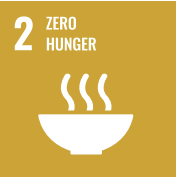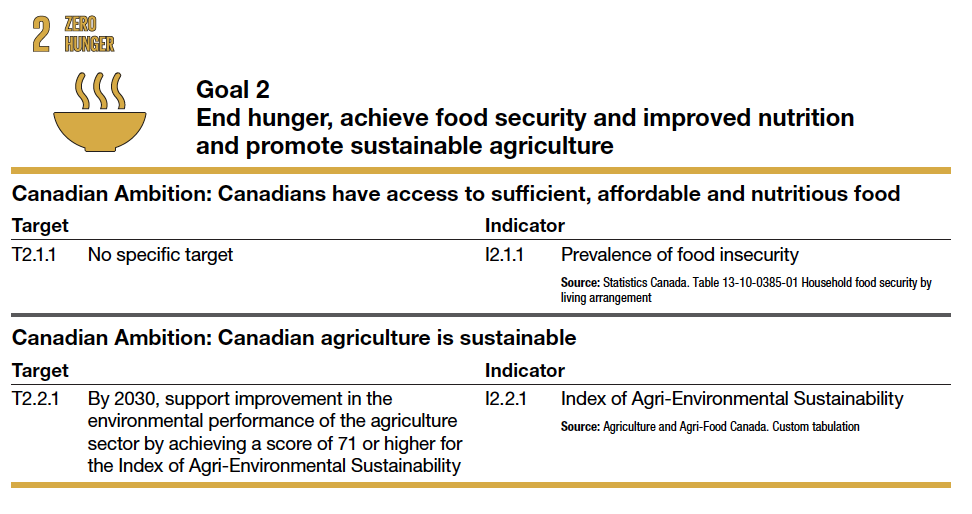Week 3

Video
In this 11-minute video made available from the SDG Academy, Dr. Jessica Fanzo (Director Johns Hopkins Global Food Ethics and Policy Program) looks at SDG#2 – ending hunger. This video discusses food security and how food security is measured, who is food insecure, where they are located and the progress to date on addressing the issues.
Analysis
As the world’s population continues to grow, one of our greatest challenges will be to ensure food security for all. Hunger and food insecurity remain a pressing problem, with significant negative consequences on the development potential of and quality of life in many countries. Although most of the world’s food-insecure populations are in developing countries, all countries face unique food security challenges[1]. Food security, as defined by the United Nations’ Committee on World Food Security, means that all people, at all times, have physical, social, and economic access to sufficient, safe, and nutritious food that meets their food preferences and dietary needs for an active and healthy life[2]. How does hunger differ from food insecurity? Even if you have never experienced uncertainty about where our next meal is coming from, you probably have been hungry – how you feel when you need to eat. Hunger is an individual-level condition. Food insecurity is a household-level economic and social condition of limited or uncertain access to adequate food. International bodies such as the UN use both terms, while many countries government may only use the term food insecurity2.
Current estimates show that nearly 690 million people are hungry, or 8.9% of the world population. According to the World Food Programme, 135 million suffer from acute hunger largely due to human-made conflicts, climate change, and economic downturns2. For Canada, 1 in 8 households (2018) was food insecure, amounting to 4.4 million people (12% of the population), including more than 1.2 million children[3].
The world is not on track to achieve Zero Hunger by 2030. If recent trends continue, the number of people affected by hunger would surpass 840 million by 2030 (2). With more than a quarter of a billion people potentially at the brink of starvation, swift action needs to be taken to provide food and humanitarian relief to the most at-risk regions. At the same time, a profound change of the global food and agriculture system is needed if we are to nourish the more than 690 million people who are hungry today – and the additional 2 billion people the world will have by 2050. Increasing agricultural productivity and sustainable food production are crucial to help alleviate the perils of hunger.
Fast Facts
- An estimated 2 billion people in the world did not have regular access to safe, nutritious, and sufficient food in 2019;
- In 2019, close to 750 million – or nearly one in ten people in the world – were exposed to severe levels of food insecurity;
- Current estimates are that nearly 690 million people are hungry, or 8.9 percent of the world population – up by 10 million people in one year and by nearly 60 million in five years;
- Individuals become food insecure for any number of complex reasons, but the root cause is nearly always poverty. Environmental crises and a wide variety of political factors also contribute to hunger and food insecurity globally;
- The majority of the world’s undernourished – 381 million – are found in Asia, with more than 250 million living Africa where the number of undernourished is growing faster than anywhere in the world;
- 144 million children under age 5 were affected by stunting in 2019, with three quarters living in Southern Asia and sub-Saharan Africa;
- In 2019, 6.9% (or 47 million) children under 5 were affected by wasting, or undernutrition, a condition caused by limited nutrient intake and infection.
Why it Matters
Why should I care about other people’s food insecurity situation? There are many reasons, but in short, because ethically we should want all people to have enough food to eat that is safe and nutritious. A world with zero hunger can positively impact our economies, health, education, equality, and social development. It’s a key piece of building a better future for everyone.
Targets and Indicators for Canada
Below is Canada’s approach to measuring progress on SDG #2 – Zero Hunger. Note the targets and indicators chosen[4].
Recommended Reading
- United Nations. (2021). The Sustainable Development Goal Report, 2020. End hunger, achieve food security and improved nutrition and promote sustainable agriculture.
- Global Affairs Canada. (2018). Canada’s Implementation of the 2030 Agenda for Sustainable Development: voluntary national review. ↵
- United Nations. (2021). Sustainable Development Goals. ↵
- Tarasuk ,V., & Mitchell, A. (2020). Household food insecurity in Canada, 2017-18. Toronto: Research to identify policy options to reduce food insecurity (PROOF). ↵
- Statistics Canada. (2021). The Canadian Indicator Framework for the Sustainable Development Goals - 2021. ↵


